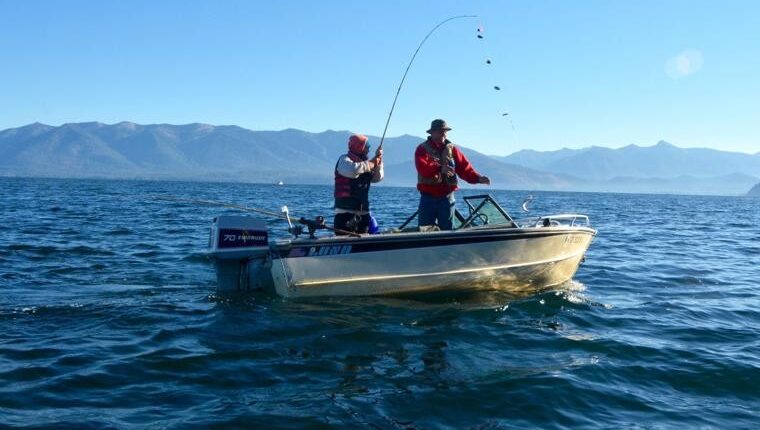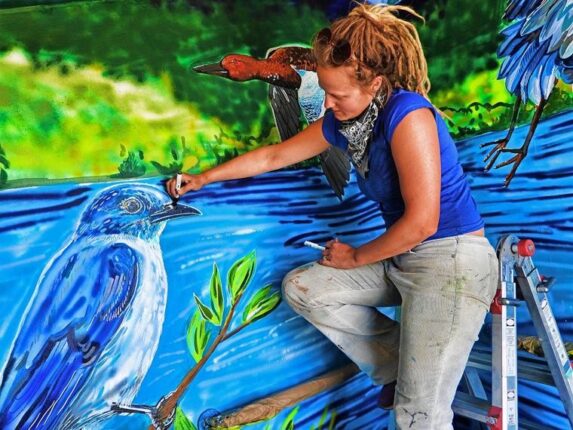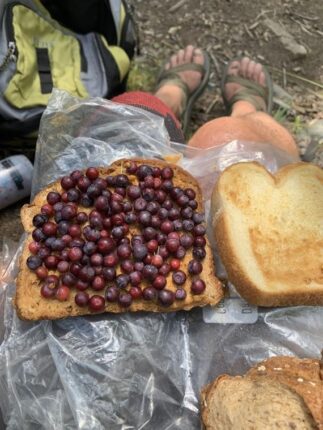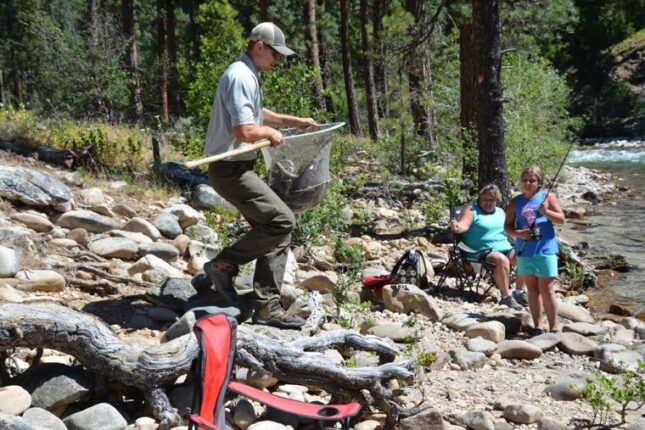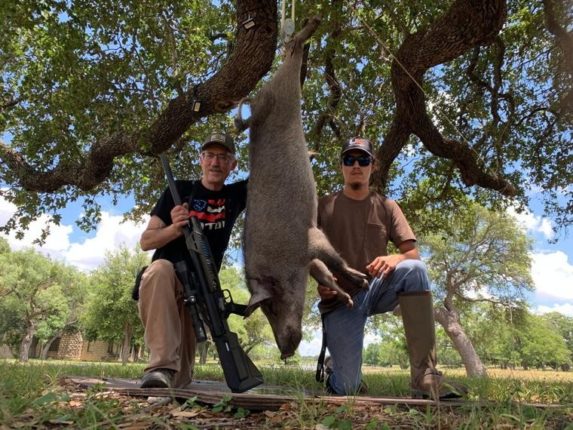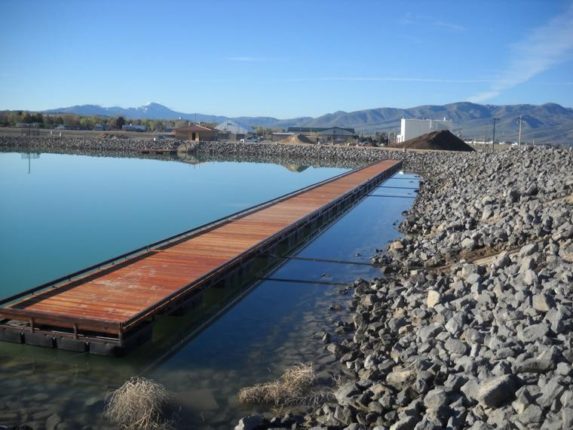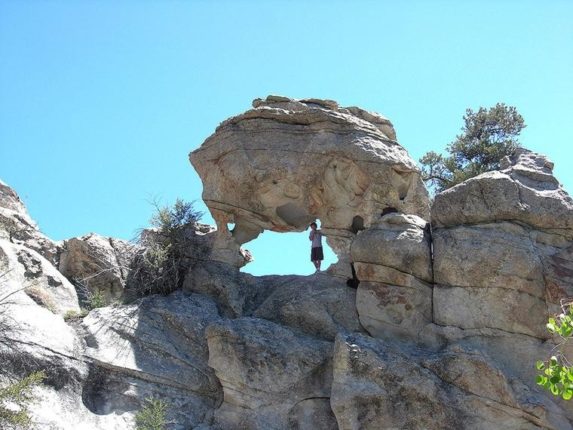Idaho is world-famous for its quality fishing, which includes not only a wide variety of species, but different types of waters. Those include Idaho’s “Great Lakes,” which are not only large in size, but also provide excellent and unique fishing opportunities for trophy-sized fish. In most cases, they also provide a user-friendly experience because services and accommodations are typically on the lakes or close by. Many also offer guided fishing trips and boat rentals for people who don’t have all the equipment they need.
Lakes also offer a serene summer (or fall) getaway where you can enjoy sparkling waters and gentle lapping of waves against the shore. You have a variety of ways to catch fish ranging from trolling in open water to casting or trolling near the shoreline in a canoe or kayak, to casting bait or a lure from a dock or from the bank.
Not to pit Idaho’s famed rivers against its lakes, but on average, fish tend to grow larger in lakes and reservoirs, and you have the opportunity to catch some of the biggest fish found in the state.
Idaho’s Great Lakes are well distributed around the state, so whether you want a day trip, weekend outing or vacation, there’s likely one fairly close, but they can also provide a good destination for a road trip and a chance to experience someplace new.
This list of destinations is hardly comprehensive. There are many other Idaho lakes worthy of your time and fishing efforts, and you can find more information at Idaho Fish and Game’s Fishing Planner, but here are a few lakes and reservoirs that are among the best:
Lake Pend Oreille
While this list isn’t in order of importance, it’s still fitting to start with Lake Pend Oreille because it’s Idaho’s largest lake, and you couldn’t consider listing the Great Lakes of Idaho without it. Lake Pend Oreille boasts some impressive stats: it’s 43 miles long and 6 miles wide with 111 miles of shoreline, not to mention 1,158 feet at its deepest spot, making it the fifth-deepest lake in the U.S.
The backbone of Lake Pend Oreille’s fishing is its kokanee population, which is thriving after Fish and Game launched one of the largest fishery restoration projects in its history to bring those fish back to abundance.
Fish and Game crews recently surveyed the lake and found more kokanee than they’ve seen in 20 years. That’s great news for kokanee anglers, but many other anglers benefit because kokanee also support the lake’s trophy rainbow trout, bull trout and lake trout populations, allowing them to grow to massive sizes. The lake has produced numerous state record fish, as well as the current world’s record for bull trout (which can no longer be harvested) and the former world-record rainbow trout.
The lake also hosts a variety of other gamefish, including cutthroat trout, brown trout, largemouth and smallmouth bass, black crappie, northern pike, and walleye.
Lake Pend Oreille is also a full-service lake with many marinas, boat rentals, guides, charters and other services, not to mention a multitude of options for lakeside accommodations.
Coeur d’Alene Lake
Being in the shadow of Lake Pend Oreille is a tough spot to be, but Coeur d’Alene Lake still shines with a combination of size, quality and variety. While roughly half the size of Lake Pend Oreille at 26 miles long and about 1 to 3 miles wide, it’s still Idaho’s second largest lake (Bear Lake is larger, but divided between Idaho and Utah).
Its native fish include Westslope cutthroat, bull trout and mountain whitefish, but throughout its history, Coeur d’Alene Lake has had many other fish introduced that now provide good-to-excellent fishing opportunities. Game fish include kokanee and Chinook salmon, largemouth and smallmouth bass, northern pike, yellow perch, black crappie, brown and black bullheads, and more.
Coeur d’Alene Lake also boasts lots of quality fishing nearby, including the Coeur d’Alene River and its chain lakes, and the North Fork of the Coeur d’Alene River and St. Joe River, all of which feature more quality fishing opportunities. The lake has not only its namesake town on its shore, but also several smaller communities, all of which provide accommodations, guides and services for a fishing destination.
Priest Lake
As if Northern Idaho didn’t have enough to brag about, Priest Lake adds another big lake with postcard scenery and quality fishing. Unlike lakes Coeur d’Alene and Pend Oreille that are located near cities, Priest Lake is more rural and less developed, but still has the all the services you need for a day trip, weekend outing or extended vacation with campgrounds, resorts, charters, boat rentals, accommodations, and more.
Priest Lake is about 19 miles long and about 4 miles wide, but it is different from other big lakes and reservoirs because it’s actually two lakes. It’s connected to Upper Priest Lake by a short, narrow channel that’s passable for most boats. The upper lake has no road access and is mostly undeveloped, but it does feature shoreline campsites.
Priest Lake’s main sport fish are lake trout, cutthroat trout, smallmouth bass and kokanee salmon. Lake trout and smallmouth bass offer the best catch rates.
The lake’s abundant lake trout population has taken its toll on the kokanee population, so catch rates for kokanee are much lower than in Lake Pend Oreille where the population is much larger. If you’re seeking a more backcountry atmosphere, Upper Priest Lake is an excellent opportunity to find it, but don’t expect to be alone because it’s a popular area for anglers, campers and boaters.
Dworshak Reservoir
If you want a big reservoir with lots of elbow room, Dworshak is a great opportunity to find solitude and good fishing. The reservoir is created by Dworshak Dam and creates a backwater on the North Fork of the Clearwater River and several tributaries stretching about 16,500 acres across miles in the heart of the Clearwater backcountry.
Anglers can catch kokanee salmon, trout and smallmouth bass. Dworshak is the current state record holder for smallmouth bass and continues to produce trophy-sized fish.
Most people access the reservoir and launch boats via Dworshak State Park at the reservoir’s south end, near the town of Ahsaka and a few miles west of Orofino.
But another option if you want more seclusion is boat-in campsites with no road access that are managed by the U.S. Army Corps of Engineers. There are 96 of them located throughout the reservoir, and all are equipped with vault toilets, picnic tables and fire rings. Use is first-come, first-served, and there are no camping fees.
Services are limited once you’re on the lake, so stock up in nearby communities before you get there.
Lake Cascade
While technically a reservoir, this lake is among the largest in the state at 21-miles long and up to 4.5-miles wide. Despite its size, it’s relatively shallow with a mean depth of 26 feet, but it’s extremely productive and has produced numerous state and world-record fish. Lake Cascade’s perch fishery is a great success story thanks to a multi-year effort by Fish and Game and partners to reduce predatory, nongame fish, transplant perch from other waters and let them naturally spawn and flourish.
While perch may be lake’s current marquee species, it has at least 10 species of game fish and produces trophy sizes for many of them. Other species include trophy-sized rainbow trout and smallmouth bass, as well as kokanee salmon and tiger muskie.
Lake Cascade is a year-round fishery, and summer is an excellent time to visit because its 4,760-feet elevation means temperatures aren’t too hot and the lake is rimmed by numerous developed campgrounds. Lake Cascade State Park offers shore-side camping around the lake, as well as boat ramps and picnic areas. It’s well-suited for RV camping and fishing with numerous paved RV pads around the lake with nearby boat launches.
Trolling is a productive way to fish, but because of its relatively shallow nature, bank fishing with bait, or pitching lures, will likely get you into fish. But beware, the lake has a well-earned reputation for being fickle, so don’t be discouraged if you don’t catch fish immediately.
American Falls Reservoir
This is another Snake River reservoir that doubles as a “Great Lake” because of its large size and trophy fishing opportunities. It’s the largest of Idaho’s Snake River reservoirs, but unlike others that tend to favor warmwater fish, American Falls is kind of a hybrid because it also supports a trophy trout fishery that includes rainbows, browns and cutthroat.
And hybrid is an apt description in other ways because although it’s a large reservoir at 55,000 acres, its shoreline has a variety of bays, inlets and coves that provide a fishing experience similar to smaller waters, which anglers in small craft can enjoy.
The lake has lots of catchable trout thanks to regular stocking by Fish and Game. About 400,000 trout have already been stocked in 2020, which thrive in the productive waters and grow to large sizes. That productivity also applies to naturally spawning smallmouth bass, which are plentiful and also grow large, and there’s also yellow perch.
The town of American Falls is at the southwest end of the reservoir, where there are also several boat launches and fuel available. There’s also services and a boat launch available near Aberdeen, midway up the reservoir on the westside. Camping is available at Massacre Rocks State Park, as well as several private RV parks and campgrounds on or near the reservoir.
Bear Lake
Large and unique are two simple words to describe this Southeast Idaho destination. Large is pretty self explanatory, and to be specific, it’s about 20-miles long and 8-miles wide. The lake is roughly divided in half between Idaho and Utah, and you can fish with a license from either state.
The unique part deserves more details. First, its clear, aquamarine color has earned it the nickname of “Caribbean of the Rockies” and the lake boasts four “endemic” species of fish, which means they exist nowhere else on earth. They include: Bear Lake whitefish, Bonneville cisco, Bonneville whitefish and Bear Lake sculpin.
Anglers are drawn to the lake for its trophy Bonneville cutthroat trout, lake trout and whitefish. In addition, there’s a unique (there’s that word again) cisco fishery where fish are dipnetted through the ice during the fishes’ winter spawning season.
The lake’s size and large fish that favor deeper water mean it’s best fished from a boat, but there are some shore fishing opportunities as well.
The lake is a destination for many people, so there’s a wide range of services available, including full-service camping at Bear Lake State Park, various accommodations from motels to vacation rentals, boat and other recreation rentals, and more.
Brownlee Reservoir
This reservoir is in upper end of Hells Canyon and is predominantly a warmwater reservoir fishery. People travel from far away to catch its abundant bass, crappie, catfish, sturgeon, bluegill and more. But what makes this reservoir fun and exciting for anglers is that regardless of what you’re targeting, there’s a good chance you will catch something else as well.
While most anglers use boats so they can reach areas that are not accessible by road, there are many coves, bays and areas that provide good shore fishing. Rocky points are typically hotspots for smallmouth bass and crappie. Catfishing for channel cats can also be excellent, especially in the upstream end where the river transitions into the reservoir.
Brownlee has a well-deserved reputation for its trophy fish, having produced several state records.
Unlike other destinations that are located along or near major highways, Brownlee requires a little more effort to reach, and most anglers access it through the small town of Cambridge along U.S. 95 midway between Weiser and Council. Supplies and service are limited at Brownlee, so make sure you bring what you need.
Henry’s Lake
Henry’s Lake is smaller than most of its fellow great lakes, but is still a respectable size at about 8 square miles. It’s also unique among them because it is located at about 6,500-feet elevation, and the panoramic peaks of the Centennial Mountains and Henry’s Lake Range provide a breathtaking backdrop.
Equally breathtaking are the trophy fish the lake produces. Henry’s Lake is a destination for anglers trying (and often succeeding) to catch its large Yellowstone cutthroat trout, sterile rainbow/cutthroat hybrids, and sterile brook trout. Sterile is notable because sterile fish tend to be fast growing and achieve large sizes.
Henry’s Lake produced the state-record brook trout, an 8-pound behemoth by brookie (or any other trout’s) standards. Cutthroats and hybrids semi-regularly top the 10-pound mark, and 20-inchers are so common they barely raise an eyebrow, unless of course, one is on the end of your line.
Due to its high elevation, Henry’s has a fairly short fishing season for open water (non-ice) and summer and early fall are both prime times for anglers.
Camping is available at Henry’s Lake State Park, and at other developed and dispersed camping areas on public land managed by the Forest Service and Bureau of Land Management. There are various other accommodations around the lake, as well as most services.
C.J. Strike Reservoir
This is another bountiful reservoir created by a dam on the Snake River in southern Idaho. But C.J. Strike is a little different than others because C.J. Strike Dam is a “run of the river” dam, so its levels remain relatively constant. Why is that important? Because it provides a relatively stable environment and a very productive place to grow fish.
Like other Snake River reservoirs in Southern Idaho, warmwater fish are its main attraction, but there are some trout as well. Smallmouth bass, largemouth bass, perch and crappie are among the most common species caught in C.J. Strike, but you can also catch bluegill, sturgeon, channel catfish and bullheads, as well as a variety of nongame fish.
While boats have a clear advantage for reaching prime fishing spots, most of the south shoreline of the reservoir is accessible by roads and offers lots of place for those without a boat to catch fish. It’s also relatively friendly to small, human-powered boats, such as kayaks, canoe and small pontoon boats, but beware the reservoir can get windy, especially in the afternoons.
The reservoir has several developed campgrounds on the south shoreline, and ample places for dispersed/undeveloped camping. You can find supplies at each end of the reservoir in the towns of Grandview and Bruneau.
